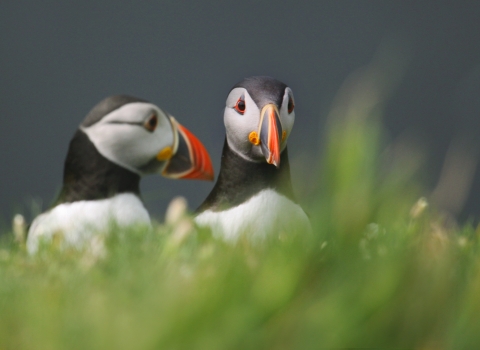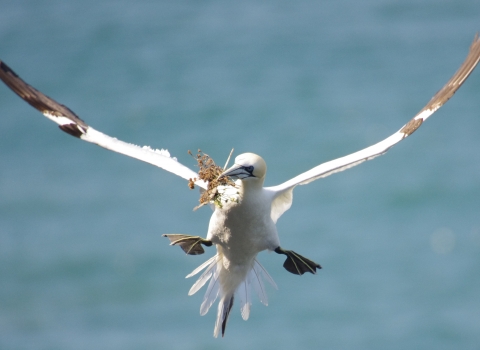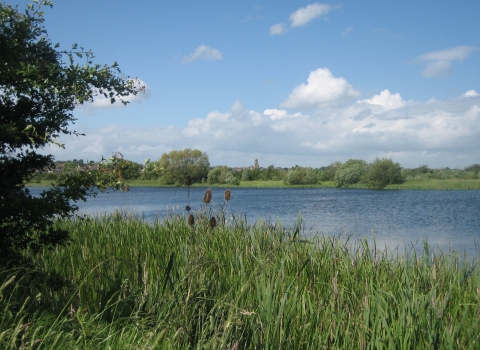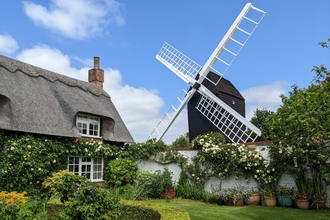I grew up near the furthest inland point in Britain so I jump at the chance to go to the coast and see what new things I can find. This summer, my Mum had given me the task of showing her puffins; at 60ish years old, she had never seen a puffin! So we packed our bags and headed north to the Yorkshire coast.
A boat trip from Bridlington took us right into the action of 500,000 seabirds breeding on the sheer chalk cliffs that loomed over us. The noise (and smell) was sensational. There were groups of guillemot bobbing on the water, kittiwakes incubating eggs in their precariously placed nests, razorbills squeezed in next to them and the occasional clumsy puffin flying past. As we went further north to Bempton, there were gannets too, soaring overhead with their delicate yellow head feathers standing out in the sunshine. Gannets here have increased in numbers in recent years and now claim a significant area on those valuable cliffs.
Mission accomplished, we saw some puffins. But for me, the sight of so many birds successfully breeding alongside a sea rich with food was something to be proud of. There are amazing wildlife experiences all over the world and especially on our own small island. Even while we waited to board the boat we could watch kittiwakes nesting on the harbour wall and see a herring gull finish its breakfast of fresh crab. June and July are certainly the best months for seeing seabird colonies so if you want to witness this spectacle for yourself, don’t delay.






